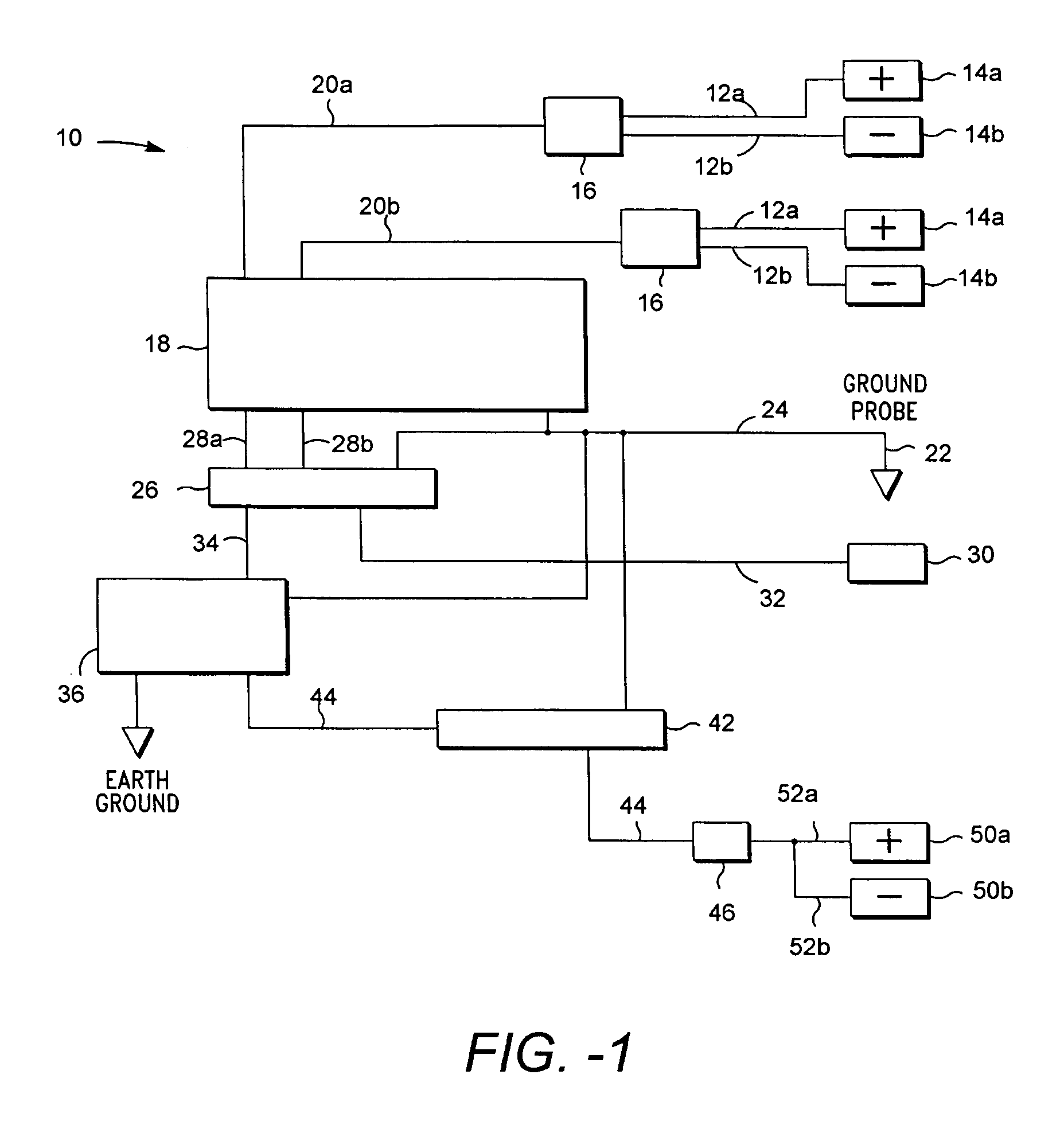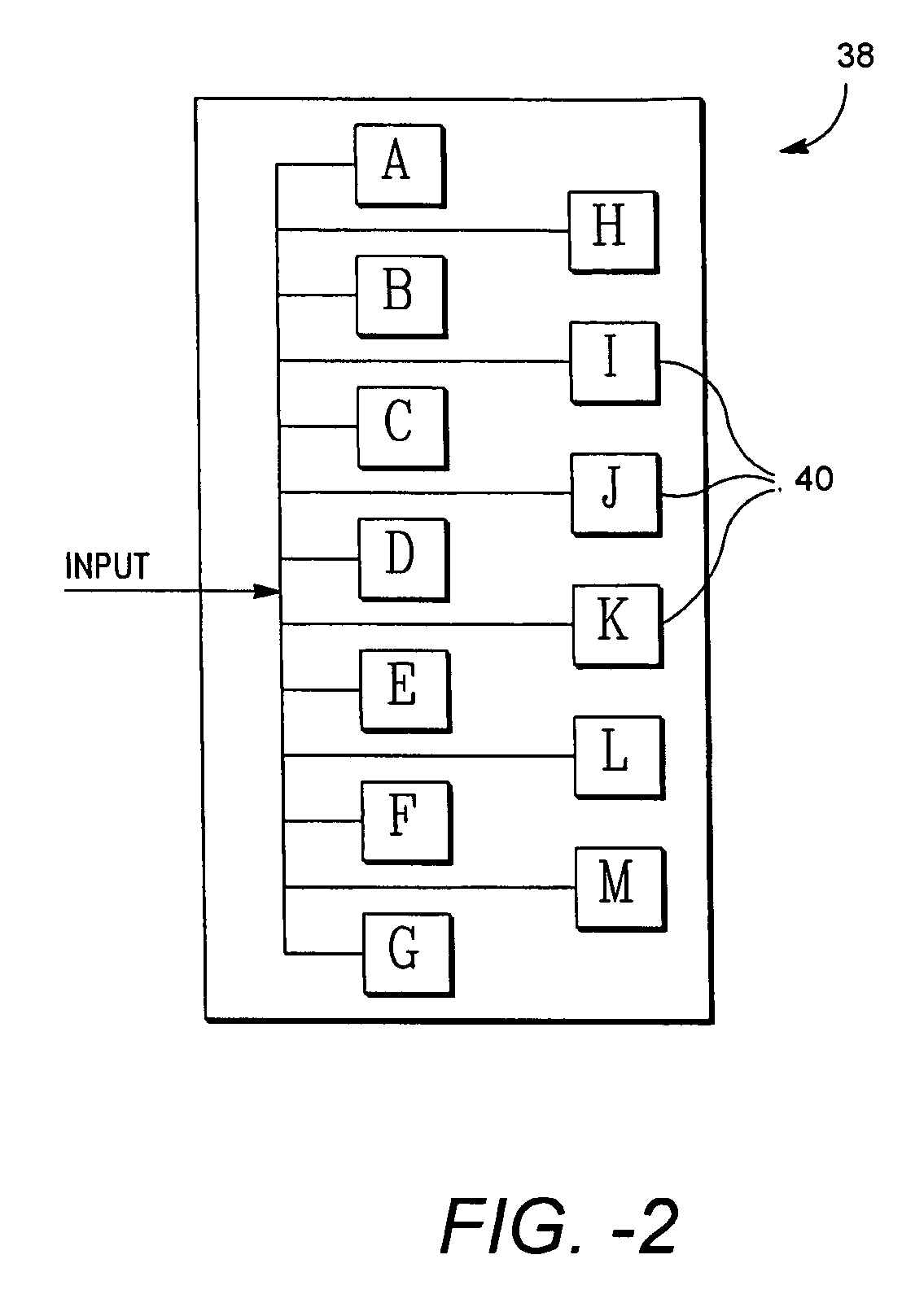Method and system for processing neuro-electrical waveform signals
a neuro-electrical waveform and waveform technology, applied in the field of medical methods and systems, can solve the problems of not being able to identify, capture, store and process available systems and methods, and control signals that are generated and transmitted, so as to achieve the effect of convenient operation and/or regulation
- Summary
- Abstract
- Description
- Claims
- Application Information
AI Technical Summary
Benefits of technology
Problems solved by technology
Method used
Image
Examples
example 1
[0152] Referring now to FIGS. 3A-3B, there are shown traces 60 and 62 having waveform signals 64a and 64b that were acquired by the neurocode system of the invention. The signals 64a and 64b, which are operative in the control of the respiratory system, were captured from the phrenic nerve.
[0153]FIG. 3A shows the two signals 64a and 64b, having a rest period 66 therebetween. FIG. 3B shows an expanded view of signal 64b.
[0154] Referring now to FIGS. 4A-4B, there are shown signals 66 and 68, which were similarly acquired by the neurocode system of the invention. The noted signals 66, 68 reflect a rat in distress (i.e., going into shock). In comparison to FIG. 3A, it can be seen that the pattern of the signal 66 has changed greatly as the rat tries to breathe rapidly. In segment 70 of signal 66 it can be seen that the initial segment is longer and the number of pulses is greater.
[0155] Referring now to FIGS. 5A and 5B, there are shown signals 72 and 78, which substantially correspon...
example 2
[0158] A study was performed to locate the phrenic nerve in the neck and stimulate the diaphragm. A neurocomputer embodying features of the invention was used to store and process captured waveform signals and generate waveform signals operative in controlling the diaphragm. A 0.58 kg rat was anesthetized; the neck, the back of the neck and chest were shaved. A tracheotomy was performed and the rat was intubated using a 14 g catheter. An incision was made at the back of the neck to locate the spine. A dremmel tool was used to perform a laminectomy and sever the spinal cord at C-2, C-3. Diaphragm and intercostal movement stopped.
[0159] The tracheotomy incision was extended to locate the right phrenic in the neck. The isoflurane was then reduced from 1 to 0.25% and the oxygen flow was then reduced to 0.3 L / min.
[0160] A hook probe was attached to the right phrenic nerve in the neck. The red (signal) lead was attached to the hook probe and the black (ground) lead was attached to an ex...
example 3
[0162] A study was performed to locate the phrenic nerve in the neck and stimulate the diaphragm. A neurocomputer embodying features of the invention was used to store and process captured waveform signals, and generate waveform signals operative in controlling the diaphragm. A 0.74 kg rat was anesthetized; the neck, the back of the neck, and chest were shaved, a tracheotomy was performed. The rat was intubated using a 14 g catheter.
[0163] An incision was made at the back of the neck to locate the spine. A dremmel tool was used to perform a laminectomy and sever the spinal cord at C-2, C-3. Diaphragm and intercostals movement stopped.
[0164] The tracheotomy incision was extended to locate the right phrenic in the neck. The isoflurane was then reduced from 1 to 0.25% and the oxygen flow was reduced to 0.3 L / min.
[0165] A hook probe was attached to the right phrenic nerve in the neck. The red (signal) lead was attached to the hook probe and the black (ground) lead was attached to an ...
PUM
 Login to View More
Login to View More Abstract
Description
Claims
Application Information
 Login to View More
Login to View More - R&D
- Intellectual Property
- Life Sciences
- Materials
- Tech Scout
- Unparalleled Data Quality
- Higher Quality Content
- 60% Fewer Hallucinations
Browse by: Latest US Patents, China's latest patents, Technical Efficacy Thesaurus, Application Domain, Technology Topic, Popular Technical Reports.
© 2025 PatSnap. All rights reserved.Legal|Privacy policy|Modern Slavery Act Transparency Statement|Sitemap|About US| Contact US: help@patsnap.com



